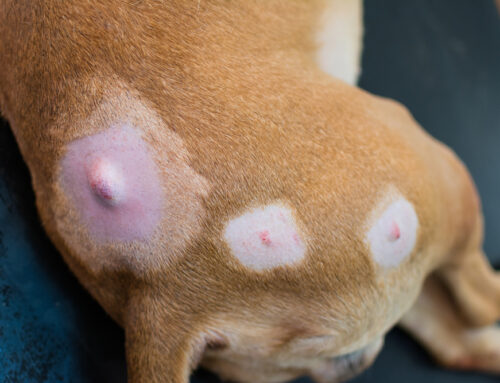Could your panting dog have asthma? Could your sneezing cat be suffering from allergies? Once you know what to look for, you will be able to determine if your pet needs further testing to help diagnose asthma or allergies. May is Asthma and Allergy Awareness Month, and the team at Oliver Animal Hospital would like to help you understand how these maladies can affect your pet.
Asthma in cats
Cats are more prone to suffer from asthma than dogs, and the condition can be both allergy-related and spontaneous. During an asthma attack, the small airways in your cat’s lungs spasm and narrow, and mucus accumulates within the passages. This limits the air movement through the airways, making breathing difficult for your cat.
Signs that your cat is having an asthma attack include:
- Coughing
- Wheezing
- Rapid breathing
- Hacking
- Open mouth breathing
Cats experiencing an asthma attack will frequently assume a hunched posture while holding their neck stretched out close to the ground.
An asthma diagnosis in cats is typically based on history, physical signs, microscopic evaluation of the cells in their airway, and X-ray findings. No definitive test exists for asthma, and the symptoms can also indicate several other conditions. Our veterinary team will perform the necessary tests to ensure we reach the correct diagnosis for your pet.
Asthma treatment for cats includes bronchodilators to open their airways and steroids to decrease their inflammatory response. In severe cases, supplemental oxygen may be needed to help stabilize your cat. Your cat may continue to suffer from asthma attacks throughout their life, but as long as they receive prompt veterinary care, they can live a long, happy life.
Allergies in cats and dogs
Allergies in pets do not result in coughing and sneezing. The usual sign is excessive itchiness that can affect your pet’s entire body. Pets suffer from three types of allergies.
Flea allergies
Flea allergies are the most common type. When a flea bites your pet, they inject their saliva into their skin. The saliva contains substances that cause an allergic response, and one flea is enough to result in a severe reaction.
- Signs of an allergic reaction include scratching, chewing, rubbing, and licking of the affected areas. In more advanced cases, you may see crusty skin lesions.
- Diagnosis of flea allergies is usually based on finding fleas on your pet. In some cases, your pet may have groomed themselves so much that no fleas are seen. Your pet’s bedding should also be inspected for fleas and flea droppings.
- Steroids are helpful in combating your pet’s initial inflammatory response, but they should not be used long term. Vigilant, year-round flea control is necessary to prevent your pet from suffering.
Environmental allergies
Also referred to as atopic dermatitis, these allergies are caused by dust mites, pollen, and mold spores, and the symptoms are the same as those for flea allergies.
- Serologic testing can be done to diagnose atopic dermatitis, but the results are unreliable. Intradermal testing is more definitive, but it can be expensive. This test involves injecting a small dose of the allergen into your pet’s skin. If a red bump forms, your pet is allergic to that substance.
- Steroids can be used to ease the initial inflammatory response, but they should not be used long term. Frequent bathing with medicated or prescription shampoo usually is recommended to remove allergens from your pet’s skin and coat.
- Hyposensitization therapy is typically most helpful, but it may take six months or more to take effect. Our skilled veterinarians will inject your pet with gradually increasing amounts of allergen in a controlled and carefully monitored environment to reduce their sensitivity.
- No therapy is a cure, so your pet will need to be under veterinary care throughout their lifetime to manage their condition.
Food allergies

Your pet may develop a hypersensitivity to ingredients in their food. Usually the response is to a protein, but a carbohydrate or preservative can also cause a reaction.
- Signs are similar to those for flea and environmental allergies. Food allergies may also cause vomiting or diarrhea.
- The only way to diagnose and treat a food allergy is to place your pet on a strict food trial. Your pet will need to be fed only novel ingredients your pet has never before eaten for a period of 10 to 12 weeks.
- Common ingredients used in food trials include kangaroo and spinach, venison and potatoes, and duck and peas. During the trial, no other treats or flavored medications should be given.
- Another option is to try a hydrolyzed diet, which contains protein broken down into such small pieces that your pet’s immune system does not recognize them as a threat.
- Once your pet’s symptoms have resolved, ingredients from their former diet should be gradually re-introduced to determine which food is causing the problem. This substance should then be permanently eliminated from your pet’s diet.
Asthma and allergies can be problematic, and affected pets will often develop secondary skin or ear infections that require long-term antibiotic or antifungal treatment. If you notice your pet showing signs of allergic reactions, don’t hesitate to contact our team at Oliver Animal Hospital.








Leave A Comment